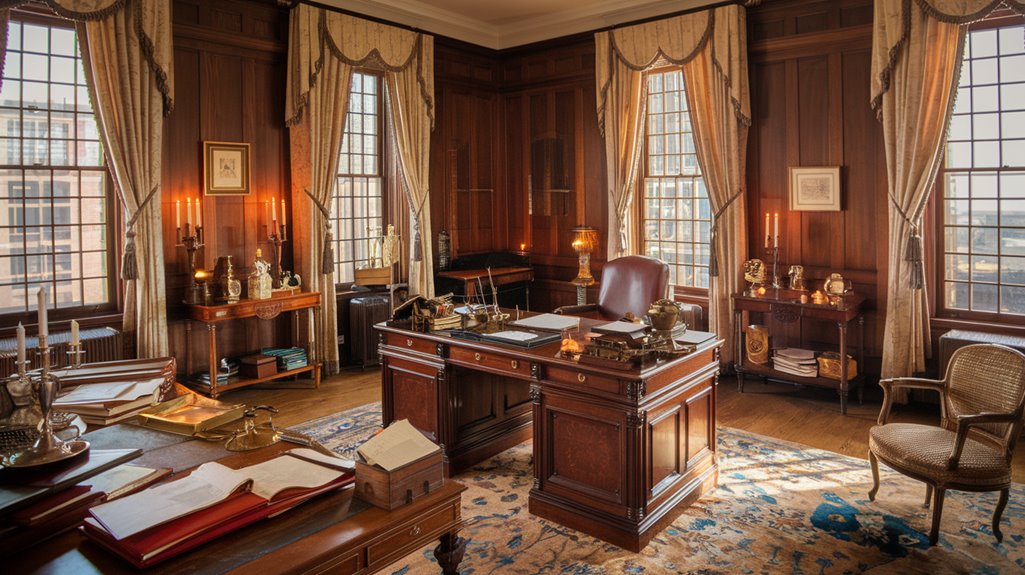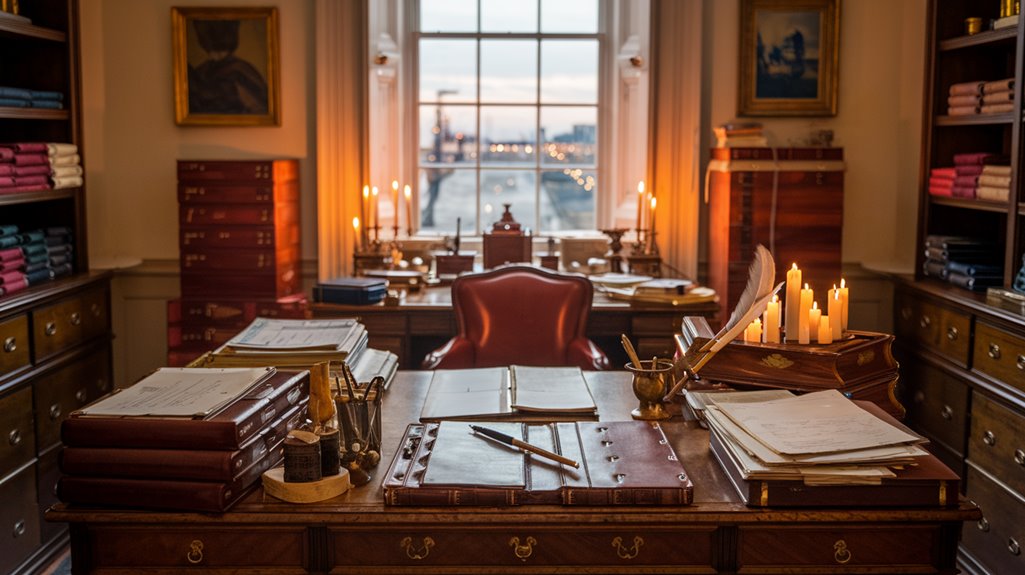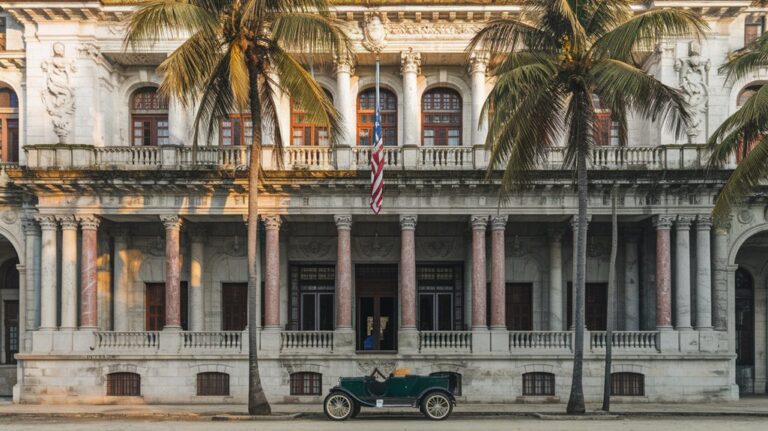John Hancock’s Rise: The Merchant Who Sparked a Revolution
Like Icarus soaring toward destiny, you'll find John Hancock's ascent from merchant to revolutionary icon wasn't a straight path to the sun. As you explore his journey, you'll notice how his business savvy during the French and Indian War laid the groundwork for something far greater than wealth. His transformation from respected Boston trader to Britain's most wanted rebel holds lessons about courage and conviction that still resonate today. Let's discover what turned this merchant into a revolutionary legend.
From Boston Merchant to Revolutionary Leader
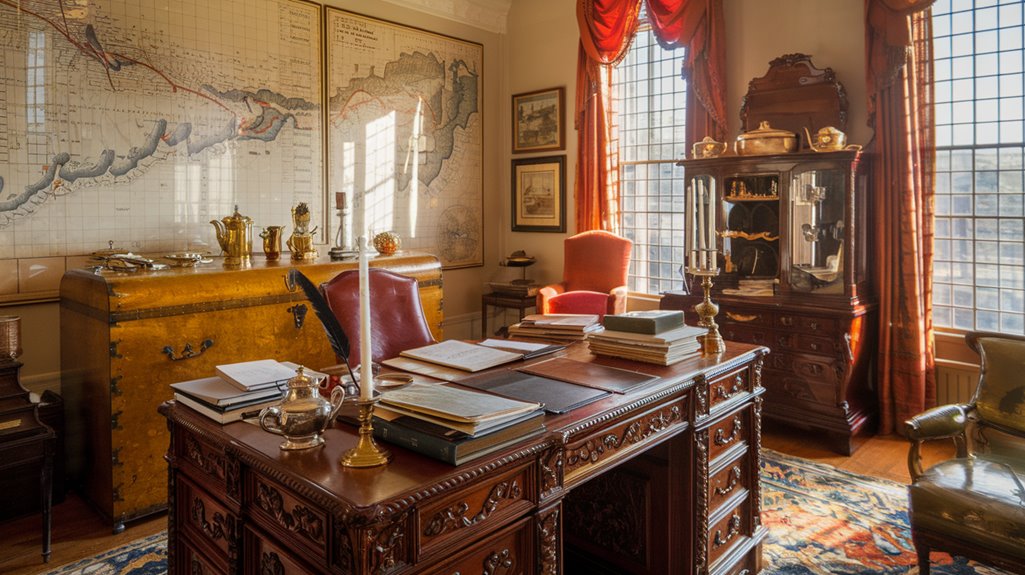
While born into modest circumstances in Braintree, Massachusetts, John Hancock's path to prominence began when his uncle Thomas took him in after his father's death. At just seven years old, this twist of fate would shape his future as a merchant and revolutionary leader.
Hancock's education at Boston Latin School and Harvard College laid the foundation for his business acumen. The French and Indian War created unprecedented opportunities for the House of Hancock to grow its wealth through military supply contracts.
You'll find his rise to power began with a strategic trip to England in 1760, where he established vital business partnerships that would later fuel his success. By January 1763, he'd become a full partner in the House of Hancock, transforming from a merchant's apprentice into one of Boston's most influential businessmen. His journey to leadership intensified as mounting tensions with Britain pushed him to oppose colonial occupation.
This commercial success would later provide the resources and connections needed to support the revolutionary cause.
The Liberty Incident: A Turning Point
Although John Hancock's wealth and influence had grown steadily in Boston, it was the seizure of his sloop Liberty in 1768 that transformed him from a successful merchant into a symbol of colonial resistance.
When British officials accused him of smuggling 25 barrels of Madeira wine and avoiding customs duties, you'd have witnessed how quickly tensions escalated.
The Liberty Riot that followed saw angry colonists destroying customs officials' homes, leading Britain to respond with military occupation. Nearly three thousand colonists participated in the widespread protests. The ship was later refitted in Rhode Island and pressed into service for the Royal Navy.
While two legal suits were filed against Hancock, his young attorney John Adams successfully fought the charges until they were dropped for lack of evidence.
This incident highlighted the growing conflict between aggressive customs enforcement and colonial merchants, making Hancock a rallying figure for American independence.
Building a Network of Resistance
Despite his initial prominence as a wealthy merchant, John Hancock's most significant contribution came through his leadership in building an extensive resistance network.
Working with the Sons of Liberty, he helped implement powerful media strategies that dominated the narrative space through allied printers, handbills, and strategic messaging that resonated across social classes.
Understanding social dynamics proved essential as Hancock and his allies developed connections that spanned from laborers to elite merchants. Like the later urban growth, his influence spread rapidly through expanding communities.
The British authorities' decision to seize his ship Liberty for confiscation became a pivotal moment that strengthened his commitment to financing resistance efforts.
You'll find that this network grew from Boston's Loyal Nine into the influential Sons of Liberty, successfully coordinating resistance activities across the colonies.
Through their combined efforts, they enforced effective boycotts against British goods and established information campaigns that the Crown couldn't counter.
Ultimately, this network laid the groundwork for what would become the Continental Congress.
Defiance in the Face of British Authority
John Hancock's network of resistance soon transformed into direct confrontation with British authority.
You'll see his defiance most clearly in his response to British taxation, particularly during the Stamp Act crisis when he boldly declared that Americans wouldn't submit to slavery through unjust acts.
His ships became powerful symbols of colonial unity and taxation resistance.
When British officials tried to board his vessel *Lydia*, the crew physically expelled them.
The seizure of his ship *Liberty* sparked widespread riots, marking a significant turning point.
After inheriting and managing his uncle's business ventures, he became Boston's wealthiest merchant, giving him significant influence in colonial affairs.
Through public speeches, like his Boston Massacre oration, he rallied colonists against tyranny.
Second Continental Congress elected him as their president, leading the charge for American independence.
By 1775, you'd find Hancock leading the Massachusetts Provincial Congress and drilling militia, forcing British authorities to target him for arrest.
He evaded capture, continuing his resistance from Lexington.
Legacy of the Bold Signature
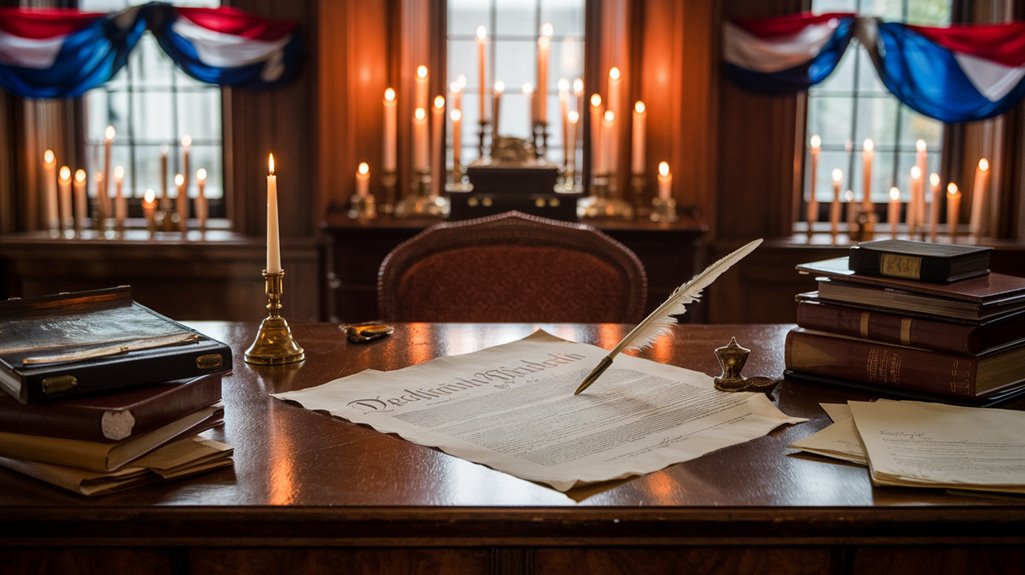
When historians reflect on the Declaration of Independence, one signature stands above all others – a bold, sweeping autograph that's become an enduring symbol of American defiance.
Beyond its historical significance, Hancock's signature symbolism has evolved into a powerful cultural icon. You'll find his distinctive mark referenced whenever Americans speak of signing documents, with "put your John Hancock here" becoming a ubiquitous phrase in everyday language. The signature showcases intricate calligraphy elements characteristic of prestigious 18th-century writing. As one of the richest men in America at age 27, Hancock's influential status gave additional weight to his dramatic signature.

